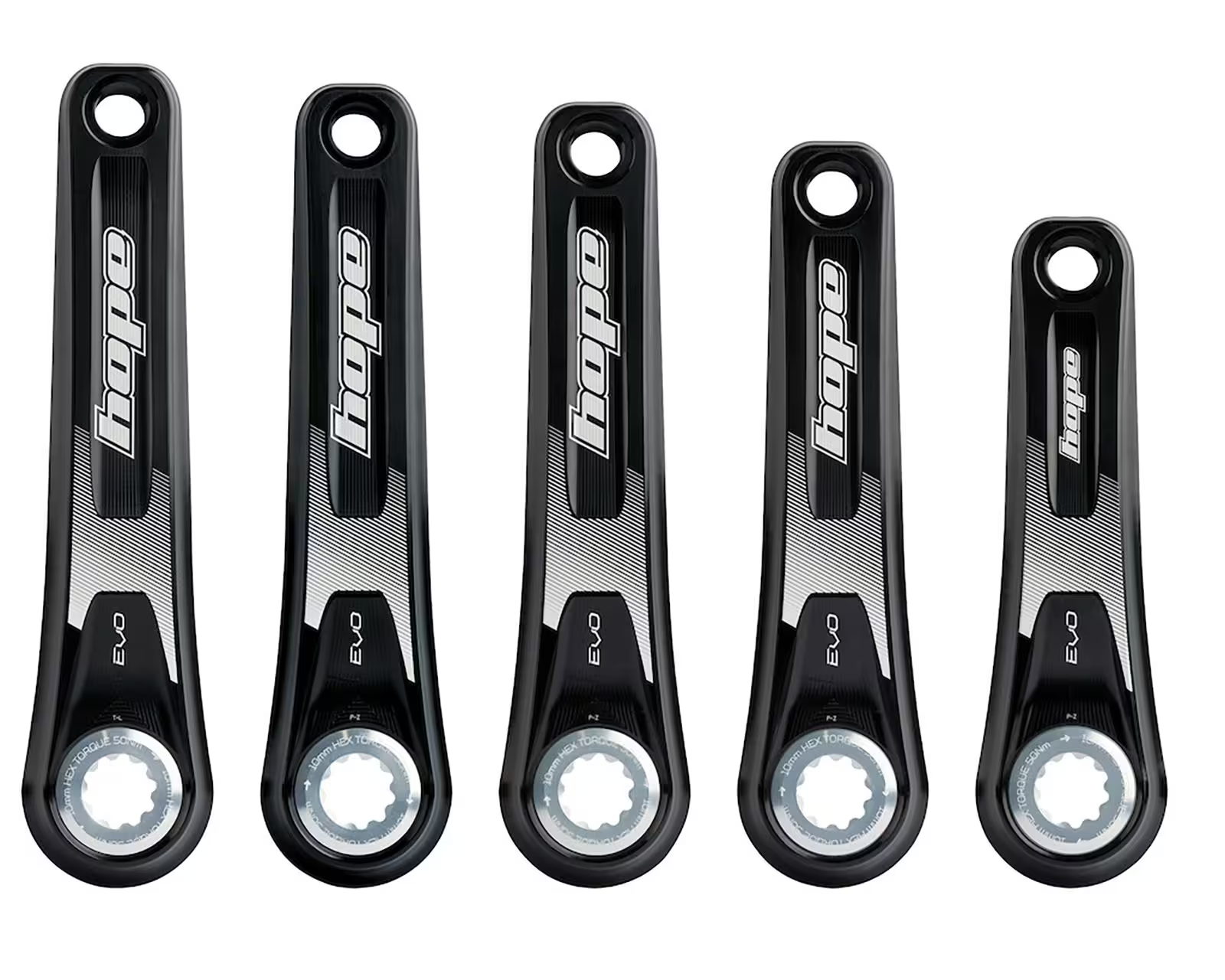Mountain bikes are designed to fit all kinds of body types, with adjustable handlebars, saddles and suspension setups. But there’s one component that’s often overlooked: crank length. While most bikes offer frame sizes ranging from XS to XL, the cranks are almost always either 170mm or 175mm—just a 5mm difference. For a piece that impacts every single pedal stroke, it’s a surprising oversight. But what if crank length really does matter more than we think?
Why crank length could transform your ride
Shorter cranks aren’t just a trend; they’re an option that could improve pedaling efficiency, knee and hip comfort and overall control. By switching from the standard 170mm cranks to shorter options—think 165mm, 160mm, or even 155mm—you might notice a more comfortable, fluid ride. And it’s not just shorter riders benefiting; many taller folks are also finding improved control and reduced strain with shorter cranks.
Less leverage, more efficiency
Switching to shorter cranks does mean giving up a bit of leverage, which might slightly impact your sprinting power. But what you lose in leverage, you gain in pedaling efficiency. Shorter cranks reduce the bend in your knees and hips, allowing your muscles to work from a stronger position, similar to the difference between a half squat and a full squat. The result? A more natural, less stressful pedaling motion that can translate into better endurance and fewer aches after long rides.
How CNC machining is changing crank options
Historically, finding shorter cranks for mountain bikes has been a challenge. Standard cranks max out around 165mm, but that’s starting to change, thanks to advancements in CNC machining. Even the ebike market is catching on. With ebikes, shorter cranks work well because the motor handles much of the torque, allowing you to gain clearance without losing efficiency. Hope, along with other brands are now offering cranks as short as 135mm.
Why shorter cranks make pedaling easier
Shorter cranks impact not just pedaling power but your riding stance, too. They bring your feet slightly closer together, offering a more stable, centered feel on the bike. BMX street riders have been using shorter cranks for years now. The reson being that the closer your feet are together the higher you can jump; therefore the higher you can bunnyhop. This closer stance frees up hip rotation, which can improve maneuvering through technical sections and tight corners. And with a higher natural…
Click Here to Read the Full Original Article at Canadian Cycling Magazine…

